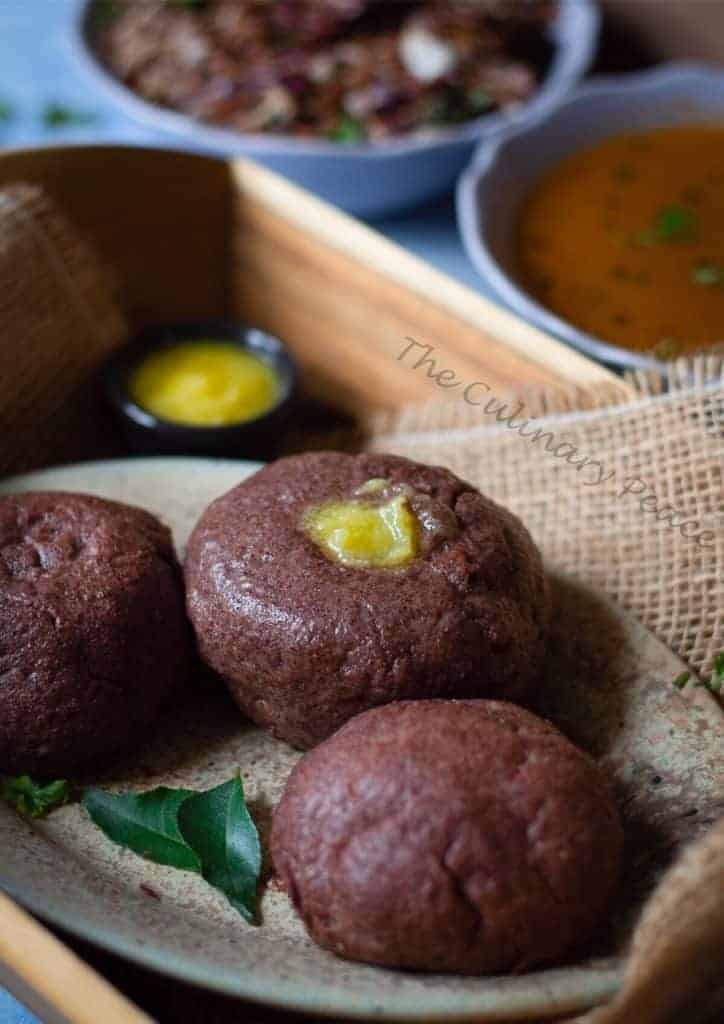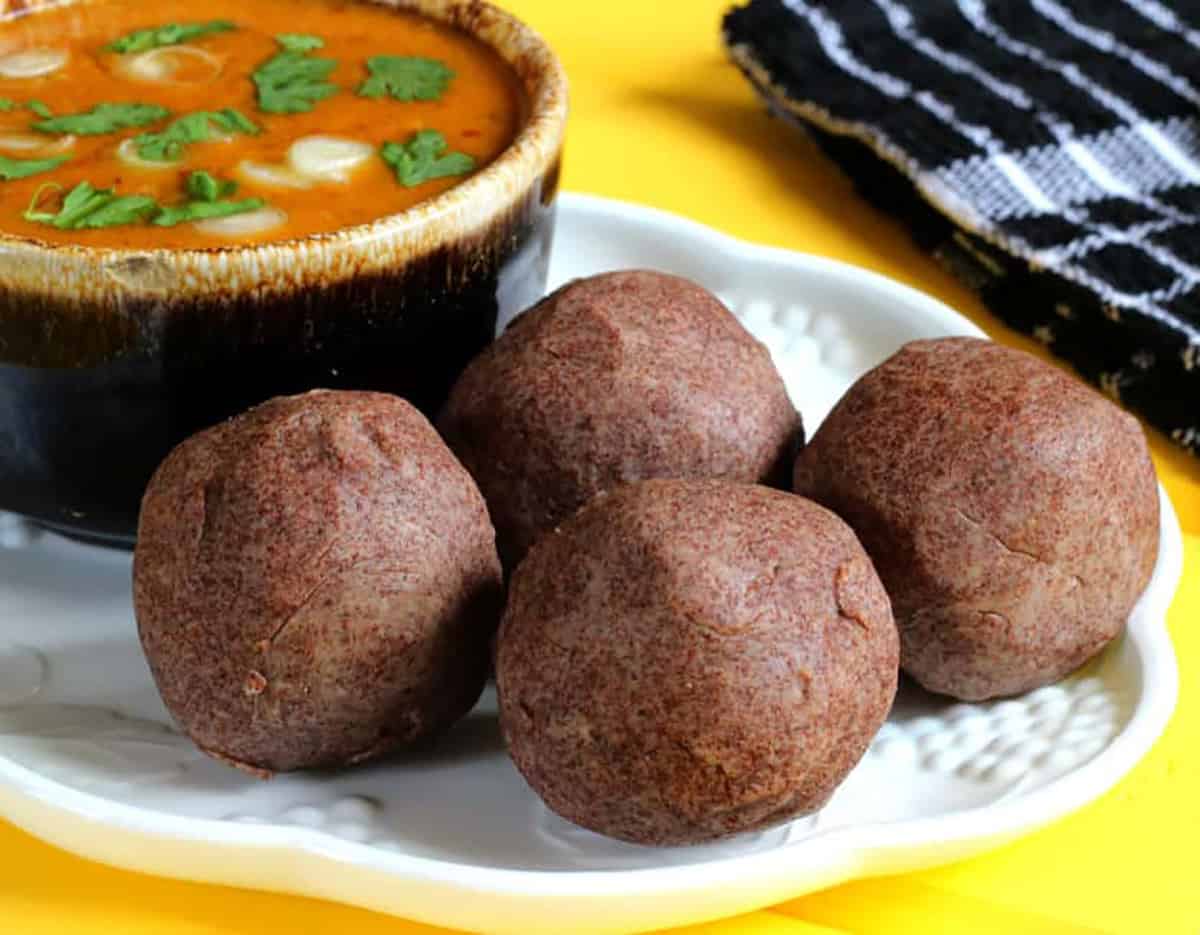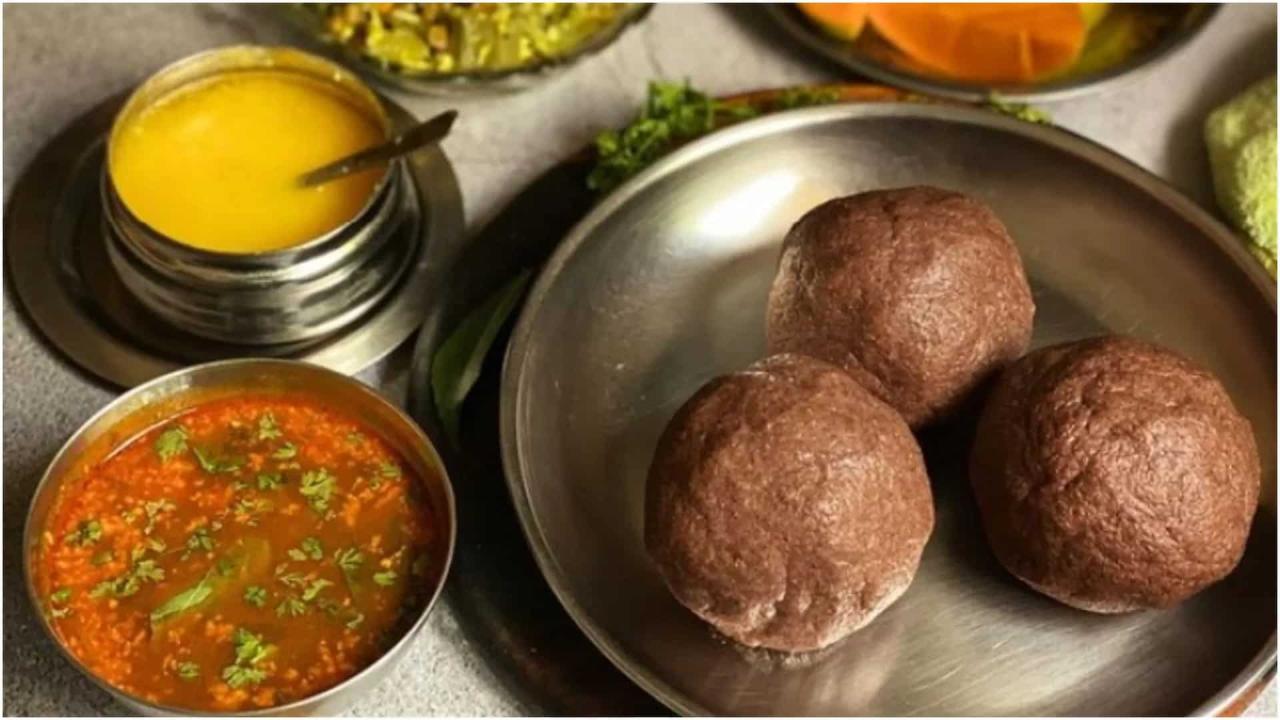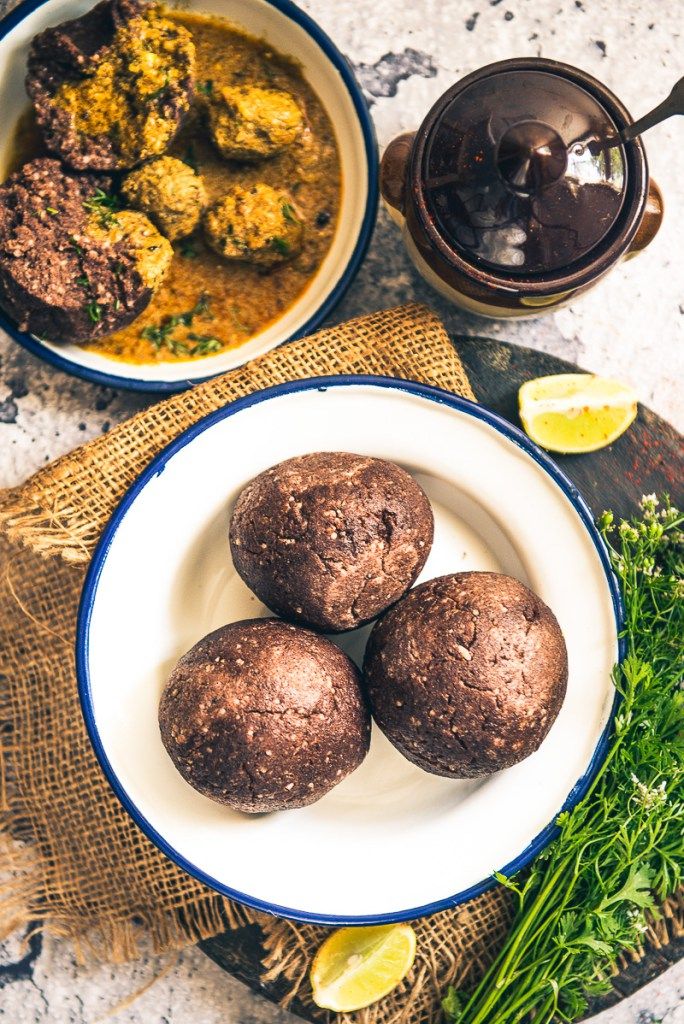Ragi Mudde, a simple yet nutritive staple from the agricultural heartlands of Karnataka, India, is as much a celebration of rustic tradition as it is a testament to nutritional wisdom passed down generations. These savory finger millet balls are a culinary embodiment of health and wholesomeness, sustaining the bellies and souls of hardworking farmers and bustling urbanites alike.
Ragi, also known as finger millet, is lauded for its remarkable nutrient profile—rich in calcium, iron, protein, and dietary fiber—and Ragi Mudde absorbs these benefits into its dense, earthy character. The preparation of this humble dish involves cooking the millet flour with water and shaping it into a smooth, round ball that is both tactile and visually austere, a harmonious blend of simplicity and substance.
Eating Ragi Mudde is an experience akin to unearthing the savors of the land, with each bite exuding the essence of the soil and sun that nurtured the ragi crop. Often paired with a hearty sambar or a spicy chutney, the mild-tasting Ragi Mudde soaks up the flavors of its accompaniments, offering not just satiety but also variability to the palate.
Ragi Mudde Savory Finger Millet Balls Recipe


Ragi Mudde Savory Finger Millet Balls
Equipment
- 1 medium pot
Ingredients
- 2 cups water
- 1/4 teaspoon salt
- 1 teaspoon vegetable or corn oil plus more as needed
- 1 cup finger millet ragi flour
- Soppu Saaru for serving
Instructions
- In a medium pot over high heat, bring the water to a rolling boil. Add the salt and oil.
- Slowly add the flour and, using the back of the wooden ladle, vigorously mix the flour to avoid lumps. Once the flour is mixed in, reduce the heat to medium, cover the pot, and cook for 2 minutes. Turn off the heat and let it sit for 10 to 15 minutes until the dough is hot, but can be handled safely.
- Wet your palms with cold water. Divide the dough into six portions and, using your hands, form each into a ball the size of a small lemon. If the dough sticks to your hands, grease your palms with oil and continue to form the balls. If you are adding these to a gravy or curry, I recommend pressing an indentation into each ball with your thumb.
- Serve with soppu saaru.
Notes
Cooking Tips about Ragi Mudde Savory Finger Millet Balls

- Ragi Flour Quality: Start with high-quality ragi flour. The fresher the flour, the better tasting your mudde will be. If possible, opt for organic ragi that has been finely milled.
- Water Proportion: It’s crucial to use the right proportion of water to ragi flour. A general guideline is 2:1 water to ragi flour, but this may vary slightly depending on the exact grain size of the flour.
- Consistent Stirring: When you add the ragi flour to boiling water, lower the heat and stir consistently to prevent any lumps from forming. This is important for achieving the smooth texture that is characteristic of Ragi Mudde.
- Cooking Utensil: Use a heavy-bottomed pan to cook Ragi Mudde. This ensures even heat distribution and prevents the mixture from sticking or burning at the bottom during the cooking process.
- Ball Formation: Once the ragi mixture starts leaving the sides of the vessel and comes together, it’s an indication that it is cooked. At this point, turn off the heat and let it cool for a minute before dipping your hands in water and forming the mixture into a ball while it is still hot.
- Serving Hot: Serve Ragi Mudde immediately while it’s still warm. As it cools, it can become hard and lose its pliable texture.
- Accompaniments: Traditionally, Ragi Mudde is eaten with sambar or a spicy chutney. The contrast between the mild, earthy flavor of the mudde and the spiciness of the accompaniment is savored by many.
- Ensuring Softness: To ensure the mudde remains soft, some people add a small portion of rice flour or cook with a bit of ghee. However, adding other ingredients is optional and depends on personal preference.
- Health Considerations: Ragi Mudde is gluten-free and rich in fiber, calcium, and iron, making it an excellent food choice for those with gluten intolerance and for individuals looking to enhance their nutrient intake.
- Practice Makes Perfect: The key to making Ragi Mudde perfectly is practice. The more frequently you make it, the better you will become at judging the correct texture and forming the balls skillfully.
Serving suggestions about Ragi Mudde Savory Finger Millet Balls

- Sambar: Pairing Ragi Mudde with sambar, a nutritious lentil and vegetable stew, is popular. The stew’s spiciness and tang from tamarind complement the mild taste of ragi.
- Green Chutney: You can enjoy Ragi Mudde with a side of refreshing green chutney made from coriander, mint leaves, green chilies, and lime juice.
- Chicken or Mutton Curry: For non-vegetarians, a rich and flavorful chicken or mutton curry makes a spirited companion to the subtleness of Ragi Mudde, creating a hearty meal that satisfies deeply.
- Yogurt or Buttermilk: Serving Ragi Mudde with plain yogurt or spiced buttermilk aids digestion and offers a cooling contrast to any spicy side dishes.
- Veggies and Lentils Sauté: A light sauté of leafy greens and lentils with garlic and mild spices can make for a healthy, diabetic-friendly meal combined with Ragi Mudde.
- Pickle: A little bit of Indian pickle (achaar) can go a long way with Ragi Mudde, adding a kick of tangy and spicy flavors that tease the palate.
- Gravy-based Vegetables: Vegetable dishes such as saagu, which is a coconut-based gravy with mixed vegetables, can be a sublime addition if you prefer vegetarian options.
Top 5 FAQs about Ragi Mudde Savory Finger Millet Balls

- What is Ragi Mudde and where does it originate from? Ragi Mudde is a traditional dish from Karnataka, India, made by cooking ragi (finger millet) flour with water to form a dense, smooth ball. This wholesome staple is deeply rooted in local culinary practices and is known for its health benefits and long-lasting energy provision.
- What makes Ragi Mudde a healthy food choice? Ragi Mudde is highly nutritious because finger millet is rich in calcium, iron, protein, and dietary fiber. It’s gluten-free and provides slow-releasing energy, making it suitable for sustaining nutrition throughout strenuous days and beneficial for those seeking healthier, gluten-free options.
- How do you properly cook Ragi Mudde? Cooking Ragi Mudde involves boiling water and ragi flour in a heavy-bottomed pan, consistently stirring to avoid lumps, and then shaping the cooked mixture into balls while still hot. The ratio of water to ragi flour, consistent stirring, and proper heat are key to achieving the right texture.
- What can you serve with Ragi Mudde? Ragi Mudde is traditionally served with sambar (a lentil and vegetable stew) or a spicy chutney. It can also be paired with various accompaniments like chicken or mutton curry, green chutney, plain yogurt, sautéd veggies with lentils, and more, offering versatility in taste experiences.
- Are there any tips for making perfect Ragi Mudde? Yes, using high-quality, fresh, and finely-milled organic ragi flour will improve the taste. The proportion of water is usually 2:1 to ragi flour, and adding a small amount of rice flour or ghee can help make the mudde softer. Additionally, practice helps in perfecting the art of making Ragi Mudde, especially in getting the right texture and forming the balls skilfully. It’s best enjoyed when served hot.
In closing, Ragi Mudde stands as a culinary bastion of South India’s rich dietary heritage, elegantly unassuming yet profoundly nourishing. It embodies the virtues of the land it comes from — hardy, wholesome, and nurturing. The savory finger millet balls are more than just sustenance; they’re a bridge connecting people to the ancestral wisdom of eating well and the bountiful earth that supports such simplicity and nutrition.

Leave a Reply